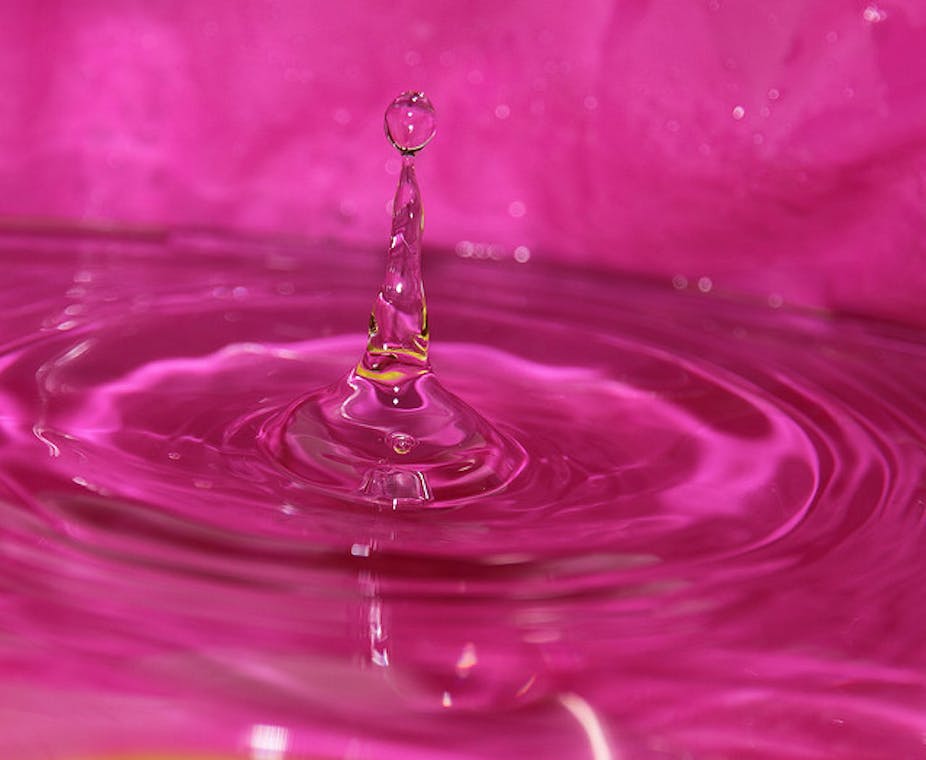Most of us take it for granted that the taps in our homes will deliver safe and clean water for drinking, cooking, showering and cleaning. This means there is usually little interest from the public in how the water gets there. However, it took less than a day for a story from Onoway, a small town in Alberta, Canada, with just over 1,000 residents, to make it from social media to global newsfeeds. “Bright pink water comes out of taps in Canada!” – suddenly we are all interested in water treatment methods.
To enjoy the benefits of clear and safe water, a hidden but valuable infrastructure of water treatment exists in our cities and villages. These are operated and maintained by engineers and scientists, and among them are water chemists. These chemists have been investigating the use of neat chemical reactions to remove undesired chemicals and potential pathogens from naturally sourced water and to prepare the water for its safe journey through distribution systems.
The local drinking water treatment plant of Onoway treats its water using potassium permanganate. This is an almost black looking solid which forms a bright purple solution in water and also removes dissolved iron and another metal called manganese.
Iron and manganese are not harmful to human health but if these metals are present at high concentrations it can lead to deposits in the water distribution system and discolouration of the water. However, the auburn tints of iron seem boring compared to the spectacular pink that has raised global interest and lively social media discussions.
Customers are very sensitive to the colour, taste and odour of drinking water – these are the human senses used to assess water quality – so this incident has understandably caused alarm. The pink colour stems from some potassium permanganate that escaped through a failed valve and into the drinking water distribution system, eventually ending up with the customers.
Potassium permanganate has been used in drinking water treatment for more than 100 years. In addition to iron and manganese removal, it is used to remove taste and odour as well as to control undesired algal or mussel growth in treatment works. It also has disinfecting properties. Permanganate forms solid, black manganese dioxide when it reacts with the water contaminants – and this can then be filtered out of the water.
A little goes a long way
Potassium permanganate has the chemical structure KMnO4 and is a compound that is electron deficient – it doesn’t have enough electrons. This lack of electrons makes it a strong oxidant that readily reacts with a wide range of unwanted compounds in water. It belongs to an established group of water treatment chemicals that can be summarised under the term “conventional chemical oxidants”, which also include oxygen, chlorine, chlorine dioxide, ozone, hydrogen peroxide and, in the wider sense, UV light.
Water is typically treated with a dose of 1-3mg of potassium permanganate per litre of water, which is quite a small amount. But only unreacted potassium permanganate has a visible pink colour in water and is visible even at very low concentrations – as low as 0.05 mg per litre of water – so it doesn’t take much to add colour.

Since only small quantities of permanganate can change the colour of water, customer complaints relating to residual permanganate are known to occur . This means treatment works usually take care to remove any unreacted, coloured permanganate before the water reaches consumers.
The pink water does not pose a threat to human health but skin irritation related to potassium permanganate is known at a certain concentration. Onoway’s mayor claimed that customers were not at risk, however these concentrations seemed to vary – some had water merely tinted pink whereas some water was bright purple. Regardless of what shade of pink they receive, customers are advised to rely on alternative drinking water sources until the permanganate is flushed out of the distribution system.
Water treatment isn’t simple
For water treatment, there is no one-size fits all approach. Drinking water treatment processes vary due to different local water resources and what the traditional and established technologies are. Iron and manganese can be removed by alternative methods, such as aeration, which uses the oxygen present in the air, or by running the water over catalytic granules consisting of manganese dioxide. But every method has its specific advantages and disadvantages.
Many parameters need to be evaluated before making an informed decision on which method to use to treat a water supply – but there’s no doubt that potassium permanganate is one of the more colourful methods.

